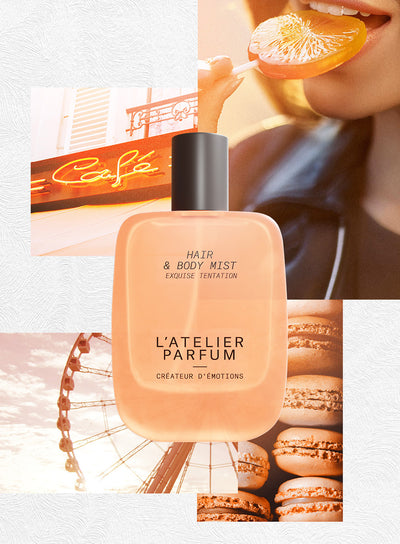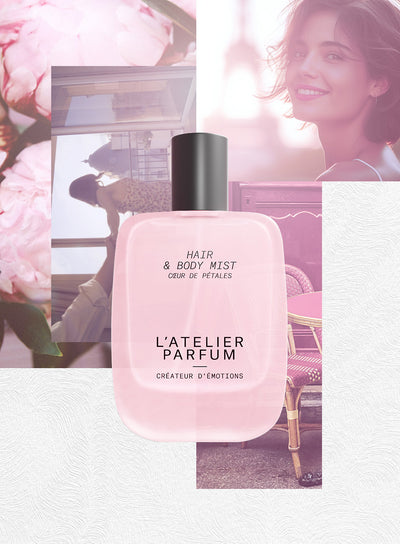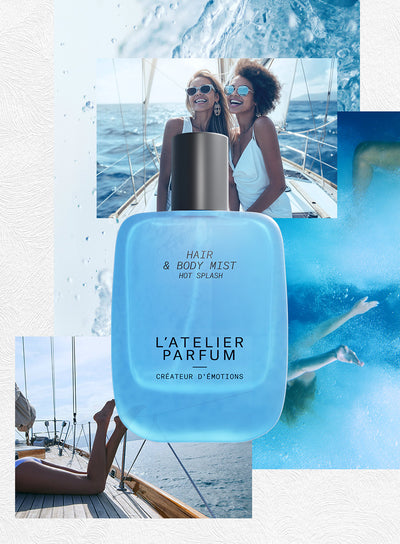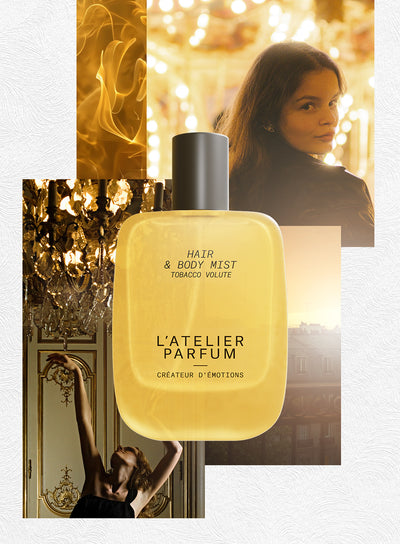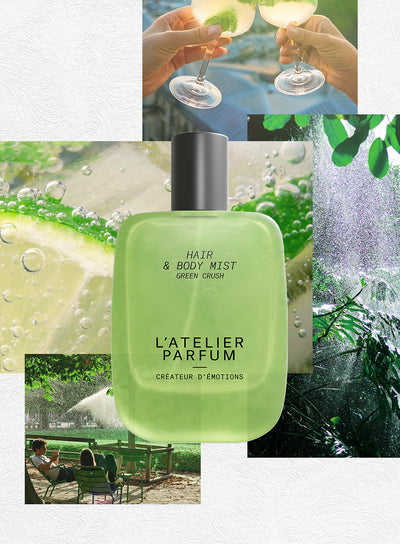- Ingrédients, Vanille
- L'Atelier Parfum
Vanilla: A Timeless Essence in Perfumery
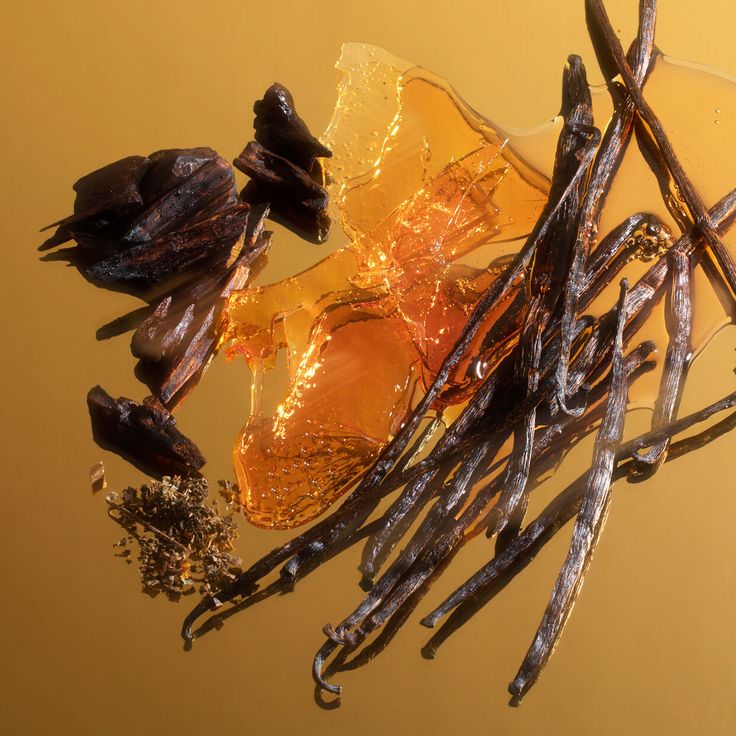
What Does the Word "Vanilla" Mean?
The word vanilla comes from the Spanish vainilla, a diminutive of vaina, meaning “little pod.” It refers both to the plant – a tropical orchid – and the pods it produces. The term dates back to the 16th century when Spanish conquistadors discovered this intriguing plant in Mexico. Captivated by its enchanting scent, they named it after the shape of its long, narrow fruits.
An Ancient and Sacred History
Long before it arrived in Europe, vanilla held a sacred place in pre-Columbian civilizations such as the Maya and Aztecs. It was used in ritual cacao-based beverages reserved for nobles and priests.
The first known mention of vanilla appears in the Chronicle of the Aztec Emperor Itzcoatl (1427–1440), illustrating its historical use. A turning point came in the 19th century when, in 1841, Edmond Albius, a young enslaved boy from Réunion Island, invented the method of hand-pollination. Using a simple tool – a thorn – he connected the orchid’s reproductive organs, allowing vanilla to be cultivated outside its native habitat.
From Flower to Pod: The Delicate Vanilla Cycle
Vanilla belongs to the Orchidaceae family and is a climbing vine with long, lance-shaped leaves. The flower is fragile and blooms for only a single day. Outside of Mexico, it must be pollinated by hand – a meticulous task that must be done within a few hours.
Once fertilized, the flower produces a green, odorless pod that takes 8 to 9 months to mature. Harvesting is done manually while the pods are still firm. Then begins a labor-intensive transformation process:
It is this long, artisanal process that gives vanilla its rich, deep, sweet scent.
The Heart of Global Production: Madagascar and the SAVA Region
Today, over 80% of the world’s natural vanilla comes from Madagascar, particularly the SAVA region in the northeast. The warm, humid climate, volcanic soil, and local expertise make it ideal for vanilla cultivation.
Vanilla is grown mostly on small family farms, without pesticides or synthetic fertilizers. Once harvested, the green pods are sorted and transformed by artisans using traditional techniques.
L’Atelier Parfum partners with the fragrance house Robertet, which works closely with local producers through Bourbon Natural Sourcing (BNS) and the on-site NGO BNS CARE. These partnerships support both the local economy and community development through school construction, technical training, organic farming support, and Fair for Life certification.
Extraction Methods and Vanilla Forms in Perfumery
Once cured, vanilla pods can be processed in several ways to obtain aromatic extracts:
Common Vanilla Varieties Used in Perfumery:
Vanilla in Perfumery: A Sensual, Evolving Sillage
Vanilla symbolizes comfort, warmth, and seduction – making it a timeless signature in fragrance creation. While often used in the base for its fixative qualities, it can also be the star in oriental, floral, or gourmand compositions.
Popular Vanilla Pairings:
💡 Did you know?
Fragrance layering allows you to build a custom scent by combining vanilla-rich perfumes — creating a personal, adaptable olfactory signature.
Vanillin: The Synthetic Alternative
Producing natural vanilla is expensive: over 600 flowers must be hand-pollinated to produce 1 kg of cured pods. That’s why vanillin, the main molecule responsible for vanilla’s scent, is often synthesized from eugenol (clove) or lignin (wood pulp).
Vanillin is widely used in the food and cosmetics industries. In fine perfumery, it can supplement or enhance natural vanilla’s creamy, ambery facets.
The Therapeutic Benefits of Vanilla
Beyond its olfactory charm, vanilla offers well-documented wellness benefits:
Vanilla in L’Atelier Parfum Fragrances
L’Atelier Parfum celebrates vanilla in many of its iconic creations, each showcasing a unique facet of this beloved ingredient:
Exquise Tentation
An oriental floral fragrance where vanilla wraps around cocoa and white musk, evoking the indulgence of a rich dessert.
Tobacco Volute
A suave, enveloping composition where vanilla softens the strength of blond tobacco, for a signature that’s both bold and sensual.
Rose Coup de Foudre
Here, vanilla supports the softness of rose and the sparkle of pink pepper, adding sensual warmth to the drydown.
Iconic perfumes with Vanilla:
Shalimar – Guerlain
Tobacco Vanille – Tom Ford
Hypnotic Poison – Dior
Vanilla Diorama - Dior
Eau Duelle – Diptyque
Vanilla Skin - Phlur
Vanilla Powder - Matière Première
Conclusion
Vanilla is both a comforting memory and a refined sensory experience. With its demanding cultivation, rich history, and unparalleled aromatic complexity, it remains one of perfumery’s most cherished and versatile ingredients — timeless yet ever-evolving.
Sources & Further Reading:
Nez, la revue olfactive – https://www.nez-larevue.fr
The Perfume Society – https://perfumesociety.org
Documents internes Robertet et Bourbon Natural Sourcing
Le Grand Livre du Parfum – NEZ Éditions
Osmothèque – Conservatoire international des parfums
Fragrantica – https://www.fragrantica.com
The word vanilla comes from the Spanish vainilla, a diminutive of vaina, meaning “little pod.” It refers both to the plant – a tropical orchid – and the pods it produces. The term dates back to the 16th century when Spanish conquistadors discovered this intriguing plant in Mexico. Captivated by its enchanting scent, they named it after the shape of its long, narrow fruits.
An Ancient and Sacred History
Long before it arrived in Europe, vanilla held a sacred place in pre-Columbian civilizations such as the Maya and Aztecs. It was used in ritual cacao-based beverages reserved for nobles and priests.
The first known mention of vanilla appears in the Chronicle of the Aztec Emperor Itzcoatl (1427–1440), illustrating its historical use. A turning point came in the 19th century when, in 1841, Edmond Albius, a young enslaved boy from Réunion Island, invented the method of hand-pollination. Using a simple tool – a thorn – he connected the orchid’s reproductive organs, allowing vanilla to be cultivated outside its native habitat.
From Flower to Pod: The Delicate Vanilla Cycle
Vanilla belongs to the Orchidaceae family and is a climbing vine with long, lance-shaped leaves. The flower is fragile and blooms for only a single day. Outside of Mexico, it must be pollinated by hand – a meticulous task that must be done within a few hours.
Once fertilized, the flower produces a green, odorless pod that takes 8 to 9 months to mature. Harvesting is done manually while the pods are still firm. Then begins a labor-intensive transformation process:
- Scalding: the pods are briefly immersed in hot water.
- Drying: they are sun-dried during the day and wrapped in cloth at night to encourage fermentation.
- Curing: the pods are aged for several months to fully develop their complex aroma.
It is this long, artisanal process that gives vanilla its rich, deep, sweet scent.
The Heart of Global Production: Madagascar and the SAVA Region
Today, over 80% of the world’s natural vanilla comes from Madagascar, particularly the SAVA region in the northeast. The warm, humid climate, volcanic soil, and local expertise make it ideal for vanilla cultivation.
Vanilla is grown mostly on small family farms, without pesticides or synthetic fertilizers. Once harvested, the green pods are sorted and transformed by artisans using traditional techniques.
L’Atelier Parfum partners with the fragrance house Robertet, which works closely with local producers through Bourbon Natural Sourcing (BNS) and the on-site NGO BNS CARE. These partnerships support both the local economy and community development through school construction, technical training, organic farming support, and Fair for Life certification.
Extraction Methods and Vanilla Forms in Perfumery
Once cured, vanilla pods can be processed in several ways to obtain aromatic extracts:
- Alcohol extraction: yields a rich, sweet absolute.
- CO₂ extraction: a solvent-free method that captures the purest aromatic compounds.
- Distillation or maceration depending on the desired scent profile.
Common Vanilla Varieties Used in Perfumery:
- Vanilla planifolia (Bourbon) – The most common. Grown in Madagascar and Réunion. Creamy, sweet, full-bodied.
- Vanilla tahitensis – Native to Tahiti. More floral, exotic, and slightly aniseed.
- Vanilla pompona – Grown in Central America. Heavier, more animalic, earthy scent, used in niche perfumery.
Vanilla in Perfumery: A Sensual, Evolving Sillage
Vanilla symbolizes comfort, warmth, and seduction – making it a timeless signature in fragrance creation. While often used in the base for its fixative qualities, it can also be the star in oriental, floral, or gourmand compositions.
Popular Vanilla Pairings:
- Woody vanilla – Blended with patchouli, sandalwood, or oud for sophistication.
- Floral vanilla – Combined with rose, jasmine, or orange blossom for softness.
- Gourmand vanilla – With caramel, praline, chocolate, or milk for a delicious effect.
- Amber vanilla – Enhanced by benzoin, labdanum, or tonka bean for warmth.
- Fresh vanilla – Unexpectedly brightened by citrus or aldehydes.
💡 Did you know?
Fragrance layering allows you to build a custom scent by combining vanilla-rich perfumes — creating a personal, adaptable olfactory signature.
Vanillin: The Synthetic Alternative
Producing natural vanilla is expensive: over 600 flowers must be hand-pollinated to produce 1 kg of cured pods. That’s why vanillin, the main molecule responsible for vanilla’s scent, is often synthesized from eugenol (clove) or lignin (wood pulp).
Vanillin is widely used in the food and cosmetics industries. In fine perfumery, it can supplement or enhance natural vanilla’s creamy, ambery facets.
The Therapeutic Benefits of Vanilla
Beyond its olfactory charm, vanilla offers well-documented wellness benefits:
- Soothing – Reduces stress and anxiety
- Antioxidant – Protects against cellular aging
- Aphrodisiac – Its warmth and comfort stimulate the senses
- Relaxing – Promotes restful sleep
Vanilla in L’Atelier Parfum Fragrances
L’Atelier Parfum celebrates vanilla in many of its iconic creations, each showcasing a unique facet of this beloved ingredient:
Exquise Tentation
An oriental floral fragrance where vanilla wraps around cocoa and white musk, evoking the indulgence of a rich dessert.
Tobacco Volute
A suave, enveloping composition where vanilla softens the strength of blond tobacco, for a signature that’s both bold and sensual.
Rose Coup de Foudre
Here, vanilla supports the softness of rose and the sparkle of pink pepper, adding sensual warmth to the drydown.
Iconic perfumes with Vanilla:
Shalimar – Guerlain
Tobacco Vanille – Tom Ford
Hypnotic Poison – Dior
Vanilla Diorama - Dior
Eau Duelle – Diptyque
Vanilla Skin - Phlur
Vanilla Powder - Matière Première
Conclusion
Vanilla is both a comforting memory and a refined sensory experience. With its demanding cultivation, rich history, and unparalleled aromatic complexity, it remains one of perfumery’s most cherished and versatile ingredients — timeless yet ever-evolving.
Sources & Further Reading:
Nez, la revue olfactive – https://www.nez-larevue.fr
The Perfume Society – https://perfumesociety.org
Documents internes Robertet et Bourbon Natural Sourcing
Le Grand Livre du Parfum – NEZ Éditions
Osmothèque – Conservatoire international des parfums
Fragrantica – https://www.fragrantica.com

